Rinnai Heat Pump Water Heater Installation https://youtu.be/R-BrzFe9qjs Rinnai is famous for their gas tankless water heaters because of quality and innovation. They are now in the tank market, more importantly the heat pump space but can a 500 watt heat pump do the work in keeping up with the modern family’s domestic hot water demands Read more
Featured Articles

Rinnai Heat Pump Water Heater Installation
Rinnai is famous for their gas tankless water heaters because of quality and innovation. They are now in the tank market, more importantly the heat pump space but can a 500 watt heat pump do the work in keeping up with the modern family’s domestic hot water demands?
The Hub’s Eric Aune [master plumber] installed the 80gal REHP (Rinnai Electric Heat Pump) water heater for a client recently, in this video you’ll see all the features Rinnai has built into the heat pump water heater.
Rinnai REHP Water Heater: https://bit.ly/REHP
Rinnai has loaded this heat pump water heater with some great features. Please leave a comment or question, thanks for watching!
Sign up for our newsletter: https://bit.ly/MH_email

https://vimeo.com/1040515147?share=copy Welcome back everyone to our weekly update. It’s hard to believe that next week is Christmas already! Have you finished up all of your holiday shopping? All of us from Mechanical Hub wish you a very Merry Christmas and a happy holidays. On this update, Eric Aune will give you a heat pump tour Read more
Welcome back everyone to our weekly update. It’s hard to believe that next week is Christmas already! Have you finished up all of your holiday shopping? All of us from Mechanical Hub wish you a very Merry Christmas and a happy holidays. On this update, Eric Aune will give you a heat pump tour, we go inside the tangible benefits of tankless, and, is press technology taking the skill out of the trades? Coach C Alan Carlson debates.

Earlier this year, we caught up with George Kazan, president and CEO, Ridgeway Plumbing, Inc., located in Boynton Beach, Fla. Founded 1956, the open shop company with 540 employees—no labor subcontractors—brought $135M in revenue in 2023. Ridgeway, dabbling in all new construction, and all residential—homes and apartments—works for most all of the major national and Read more

Greg Kozan
Earlier this year, we caught up with George Kazan, president and CEO, Ridgeway Plumbing, Inc., located in Boynton Beach, Fla. Founded 1956, the open shop company with 540 employees—no labor subcontractors—brought $135M in revenue in 2023. Ridgeway, dabbling in all new construction, and all residential—homes and apartments—works for most all of the major national and regional homebuilders and developers. Completing well over 10,000 units last year, the company currently serves seven markets throughout Florida and is continuing to expand its footprint.
MH: During the pandemic, how did Ridgeway fare? How did you navigate that most unusual time?
KOZAN: After a brief (maybe one month) period of extreme uncertainty, residential construction began to explode. Seems like everyone wanted to come to Florida and buy a house. While welcome, those were very stressful and challenging times, given the supply chain and labor shortage issues, as well as significant cost increases. Most of that is in the past now.
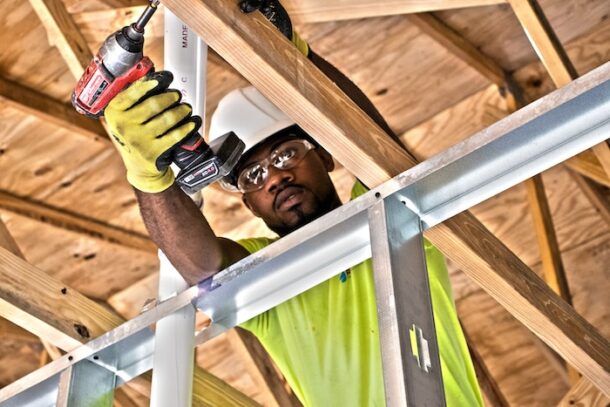
MH: In general, most of the country is experiencing a skilled labor shortage. Are you experiencing that in Florida, and what measures does Ridgeway employ to make sure they are hiring the best?
KOZAN: I’d be lying if I told you that onboarding and retention isn’t a huge challenge for us. Most of what’s available for the trades today are entry-level people, and with that comes a high degree of turnover in the early weeks and months. It’s critical for us to get these people up to speed. Besides having around 80 of our guys in apprenticeship classes, we do a lot of classroom and field training, videos produced in-house, and mentorships.
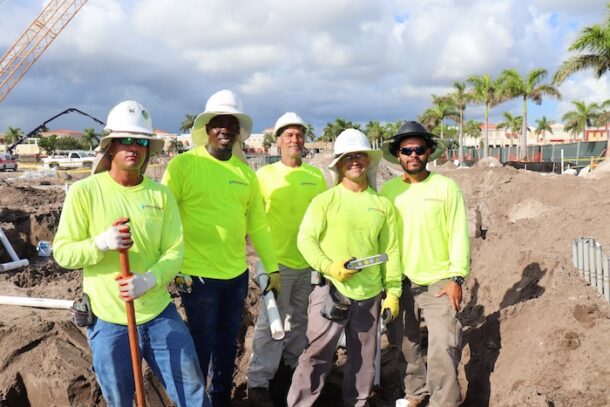
MH: You had mentioned that Ridgeway was all residential plumbing—about 80% homes and townhouses, 20% apartments—how are both those markets in your area, and how do you see them in the short term?
KOZAN: While starts did begin to fall off a bit last year with the interest rate run-up, things are still quite strong on the homebuilding side. Many apartment projects have been getting delayed or canceled, and it may take a year or so for things to stabilize there. Still, we remain quite bullish on housing in general, and in particular the residential market in Florida. It’s all about demographics.
MH: What are some of your top concerns as the president of a large plumbing company in 2024? How are you handling it?
KOZAN: Housing demand is not going away, so our primary mission is twofold—build our market share to get all the work we can handle, and continue to improve operationally so we can better handle all the work that we get.
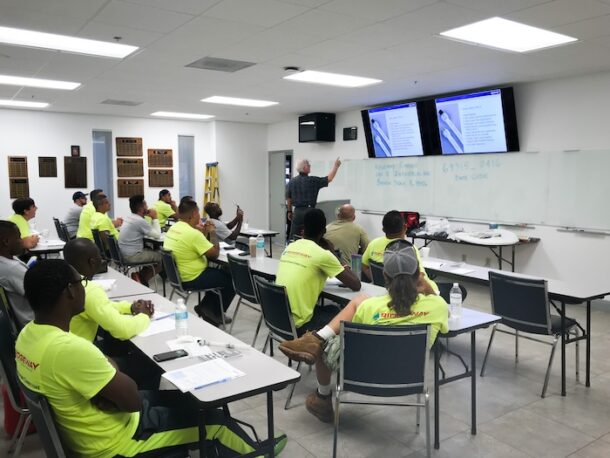
MH: What do you feel have been some of your top successes over the past few years?
KOZAN: Actually, ever since the Great Recession we have invested heavily in our technology and information systems. Our entire business operates on a fully integrated operational software package developed by our IT staff in-house. Our proprietary system and apps are designed to address the unique needs of a large volume residential trade contractor—including scheduling, document management, logistics, reporting, quality inspection, as well as payroll and accounting.
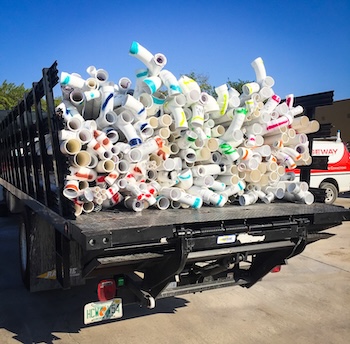 Additionally, the major piping systems in every single one of our homes and apartment buildings are computer designed and fabricated, resulting in accuracy, consistency, and timely installation—critical in fast-paced housing construction.
Additionally, the major piping systems in every single one of our homes and apartment buildings are computer designed and fabricated, resulting in accuracy, consistency, and timely installation—critical in fast-paced housing construction.
MH: Over the last few years, we’ve been hearing about the Infrastructure Bill. Was Ridgeway able to “tap” into any federal money?
KOZAN: Not directly applicable to our markets, but better roads and infrastructure is always welcome to handle the strong influx of population growth we’re experiencing throughout Florida.

https://vimeo.com/1038401163 Welcome back to our weekly update. Another Friday the 13th? Oooph. I hope everyone gets through the day without any black cats, walking under ladders, you know the drill. What are you superstitious about? We hope you have a great day, nonetheless. On this update, we’ll talk heat pump water heaters, the effects of Read more
Welcome back to our weekly update. Another Friday the 13th? Oooph. I hope everyone gets through the day without any black cats, walking under ladders, you know the drill. What are you superstitious about? We hope you have a great day, nonetheless. On this update, we’ll talk heat pump water heaters, the effects of potential tariffs from the new president, and our new podcasts.

There has been some tough rhetoric coming out of president-elect Trump’s camp regarding tightening the screws on imported goods by implementing a hefty tariff on countries such as China, Mexico and Canada, to name a few. Is this a good attempt to bring more manufacturing stateside? How will this affect the economy? Is this even Read more
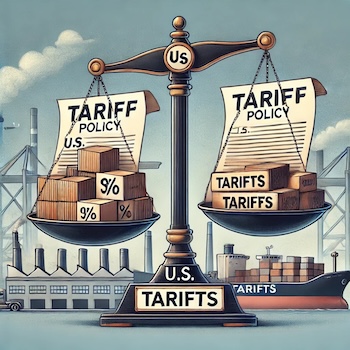 There has been some tough rhetoric coming out of president-elect Trump’s camp regarding tightening the screws on imported goods by implementing a hefty tariff on countries such as China, Mexico and Canada, to name a few. Is this a good attempt to bring more manufacturing stateside? How will this affect the economy? Is this even a good idea? We talk to some industry leaders about tariffs and what it means for the U.S. economy moving forward.
There has been some tough rhetoric coming out of president-elect Trump’s camp regarding tightening the screws on imported goods by implementing a hefty tariff on countries such as China, Mexico and Canada, to name a few. Is this a good attempt to bring more manufacturing stateside? How will this affect the economy? Is this even a good idea? We talk to some industry leaders about tariffs and what it means for the U.S. economy moving forward.
Recently, on the Crosstalk episode of the Make Trades Great Again and Appetite for Construction podcasts, this very topic came up and Andy Mickelson, Mickelson Plumbing and Heating, Missoula, Mont., and Eric Aune, Aune Plumbing, Zimmerman, Minn., were in unison in their view on tariffs. “There will be an impact,” says Mickelson. “Every single item that we touch has some impact from an imported product or good. And to sit back and believe that it’s not going to have a day-to-day impact or a cost increase is foolish.”
“It’s a tax that’s going to kill sales; it’s definitely going to affect us moving forward, especially if we see higher tariffs,” says Aune.
Mickelson continues, “There’s going to be a ‘trickle up’ effect, and along with that we’re going to see a lack of material … we saw brief chunk of this in 2021 when we had the port issues and shipping problems, and you extrapolate that into that into that these items aren’t coming because they are too expensive, how do you get around that? You can’t just flip a switch and just say we’re just going to make it here. We’re not ready for that, and I don’t think that this country is ready to become a manufacturing country. I don’t think there enough people who are willing to work on the assembly line … we can’t get people to sign up right now to become a plumber or an electrician or a data communication person—any of those manufacturing-type jobs are very much so in line with what it means to go out and work with your hands, be in a skilled trade.”

So, the back-and-forth debate continues to brew relating to whether instituting tariffs is beneficial to the American economy and the American worker. Dain Hansen, Executive Vice President, Government Relations, The IAPMO Group, says that economists have different views on the topic of tariffs, but the plumbing industry is well-positioned to support continued domestic production of what our country needs—and increase U.S. exports to other countries.
“Any policy that strengthens our manufacturing muscle is good for the economy and increases job opportunities in the trades. Programs such as the Market Development Cooperator Program and Standards Alliance at USAID, along with the Department of Commerce’s Foreign Commercial Service, provide vital support to U.S. exporters. We hope the administration will continue backing these programs to ensure U.S. products remain competitive overseas. We continue to monitor the impact tariffs are having on our global industry as manufacturing move locations to avoid these costs,” says Hansen.
While IAPMO is cautiously optimistic and vigilant, Plumbing Manufacturers International (PMI) shares concern. “During his campaign, President Trump spoke about his desire to increase tariffs—as high as 60% on Chinese goods, 10% to 20% across the board on all foreign goods, including Europe, and 25% on imports from Mexico, unless they curb the number of immigrants coming across the border. If he’s successful, these tariffs will have an inflationary impact, increasing the costs of production and in turn the costs of products in the marketplace. That’s certainly one of the biggest concerns plumbing manufacturers have right now.
“Our stance on this issue all along is that tariffs are harmful to the economy because they increase costs for manufacturers and have an inflationary impact on customers wishing to purchase plumbing products. These increased costs lead manufacturers to provide fewer jobs and they have less money for compensation as well. From an economic standpoint, we see no benefits from tariffs. PMI has always been an advocate for free and fair trade among nations,” says Kerry Stackpole, CEO and Executive Director, PMI.
According to Ben Brubeck, Vice President of Regulatory Labor and State Affairs, Associated Builders and Contractors (ABC), tariffs are a negotiating tool to renegotiate policies with other countries. “While having a hard time getting materials from overseas, resolving the domestic supply chain is a good thing.”
